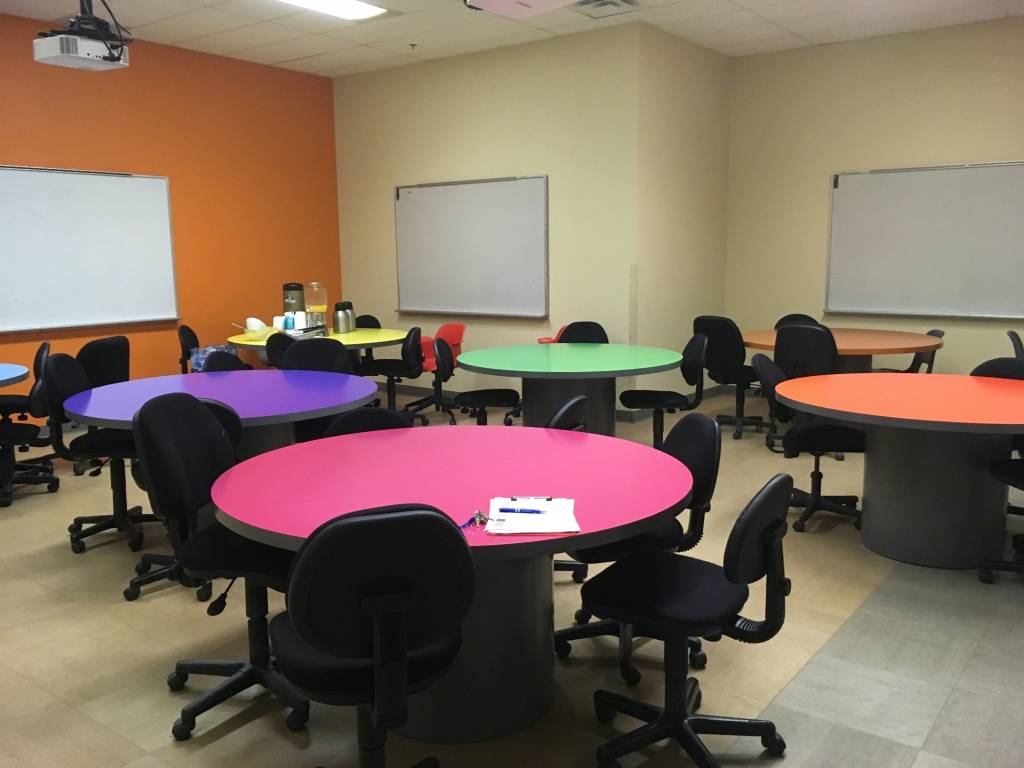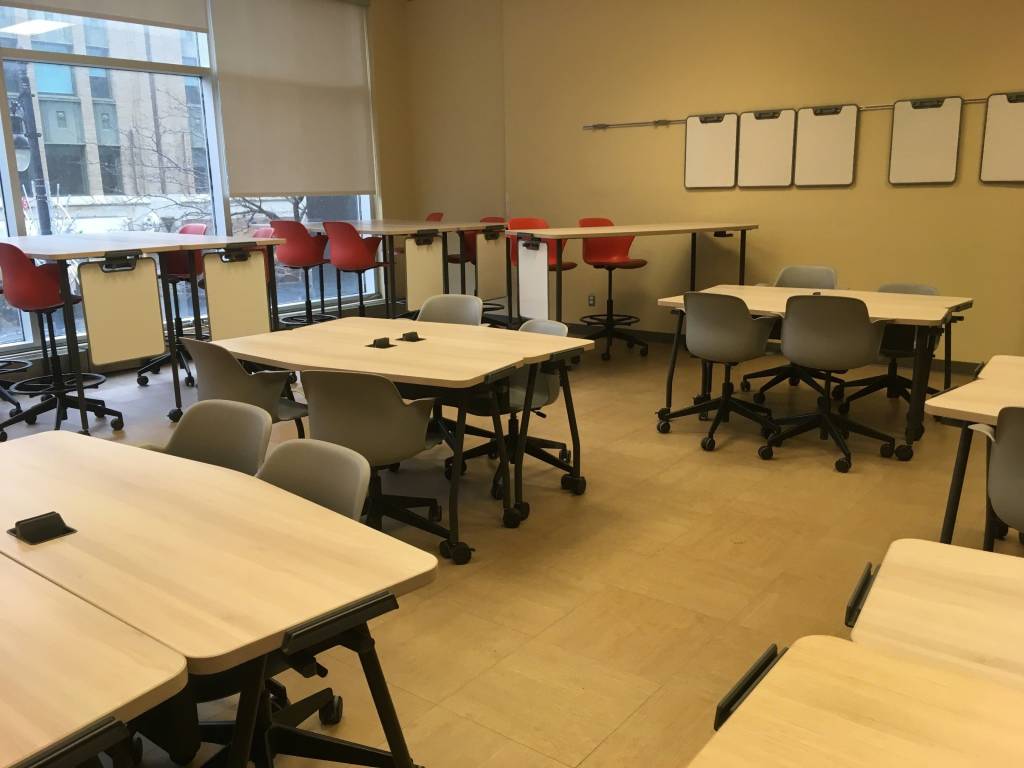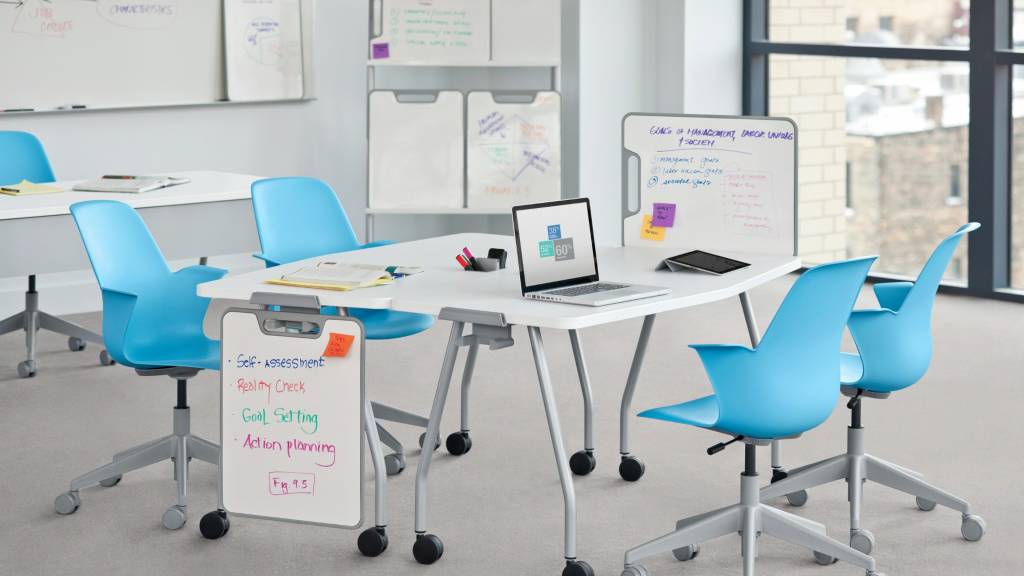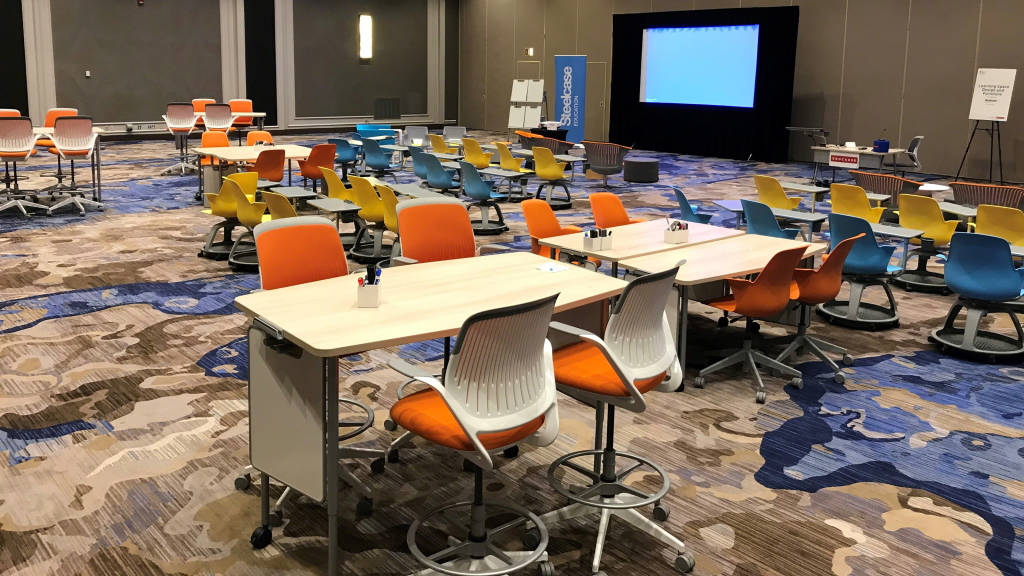Active Learning Fosters Soft Skills in Students
LaSalle College is teaching students collaboration, creativity and communication
In a recent report by Oxford Economics, employers listed the qualities they desire most in future employees. What made the top of the list? It wasn’t programming, software knowledge or technical capabilities. It was soft skills. Things like interpersonal and communication skills, teamwork and empathy, combating ambiguity and overcoming obstacles are the skills that employers today deem most hirable and most important in the workforce (Gallup Business Journal).
At LaSalle College in Montréal, Québec, educators recorded improvements in the development of students’ soft skills after implementing an active learning initiative, classroom and tools on their campus. At the Educause Learning Initiative (ELI) annual meeting in January 2018, Jolyanne Le Duc, Pedagogical Support Coordinator, and Mathieu Lépine, Assistant Dean, from LaSalle College shared their findings.
An Active Learning Journey
LaSalle’s active learning efforts started in 2011, when educators opened their first non-traditional classroom full of color called their “collaborative room.”
They also formed an active learning community on campus which included programs and workshops for teachers about student-centered pedagogy as well as an online teacher forum to share active learning activities and tips.
While having a more colorful classroom was a good start, it wasn’t enough. LaSalle wanted more spaces designed to help students engage in their own learning. In 2016, they applied and were later granted the Steelcase Education Active Learning Center Grant.


“It was a way for us to improve the tools and activities in our active learning community,” said Lépine. “We really wanted to change from a teacher-centered approach to a student-centered approach.”
As they planned to start using their new space, LaSalle gathered its active learning community to determine objectives and measurement. After collecting a year’s worth of feedback, they had a powerful story.
Positive Outcomes
Students reported feeling more at ease in the Active Learning Center classroom and teacher feedback suggested the same. Teachers said they felt more relaxed in the spacious, bright active learning room which encouraged them to try new things. However, the most exciting result was the positive impact on students’ soft skills.
“Soft skills are competencies that you use in the workplace. For example, teamwork or communication, skills that are not necessarily tangible.” says Lépine
Educators recorded positive change in student communication, creativity, collaboration and critical thinking. Students appreciated their teachers guiding activities that fostered teamwork. They confessed to feeling more familiar with everyone in the classroom because they could look at each other instead of being stuck in rows, staring at the backs of people’s heads. Teachers said students exhibited a genuine interest in being in class and typically timid students were far more engaged.

Students called the Verb whiteboards “stress-reducers.” It was easier for them to present their ideas from anywhere in the classroom with a whiteboard, than to stand alone at the front of the class using the big whiteboard on the wall. The Verb whiteboards also created a culture of transparency where students could see other groups’ ideas and build off of them.
Finally, the space made it easier to focus. Students said it was easier to concentrate throughout class because they had the freedom to move around or to get up and stand at a high table if they felt tired. Due to the increase in teamwork and group activities, they felt more obligated to maintain focus.
“After a year, we have good data.” said Lépine. “But, we want to get more data.”
Teacher Training
After relaying their findings to the administration, LaSalle added four new active learning rooms and continues to improve teacher training and available resources. While sharing their journey at ELI, Lépine and Le Duc led a teacher training exercise for attendees. They asked: How would you use what is in this room to teach students soft skills?

Attendees were surprised by the countless activities and applications they could think of in just seven minutes. One person liked how the seating configurations facilitated both formal and informal teamwork. From coffee table casual, to desk-to-desk formal, she noticed how various group formations were able to happen naturally because of the furniture.
Another group of attendees said employers today see a lack of ownership in learners. Instead of waiting for someone to tell them what to do, employers need graduates with a sense of responsibility. Lépine contends this relates to the development of soft skills. LeDuc suggested taking advantage of the flexible furniture by making students responsible for designing the learning space every day. Students develop initiative by allowing them to own the configuration of the room and challenging them to maximize learning outcomes.
LaSalle continues to explore new strategies to leverage active learning practices and tools on campus. With a growing active learning community, now roughly 80 teachers, and administrators on their side, their journey has just begun.
Learn more about how the educational environment can support active learning.


